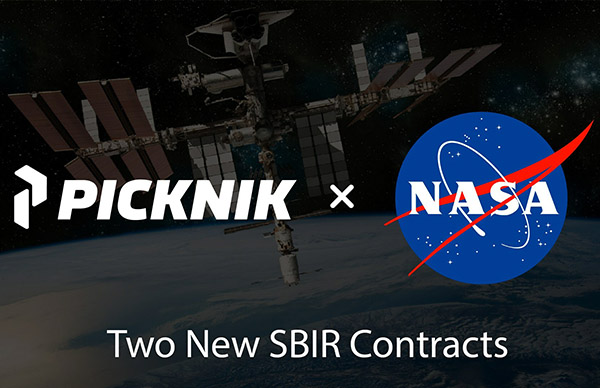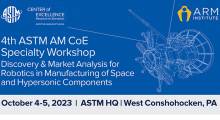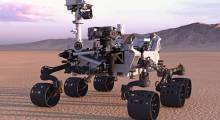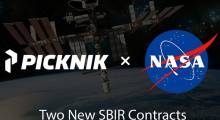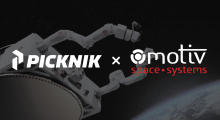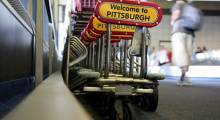PickNik Inc. yesterday announced that it has successfully secured two Small Business Innovation Research, or SBIR, contracts with the National Aeronautics and Space Administration. The company said the contracts validate its expertise in developing technologies for autonomous robotic manipulation, utilization, and maintenance, as well as integrated mission planning and execution for space operations.
“We are pushing the boundaries of autonomous robotic systems in order to revolutionize space operations,” remarked Dr. Dave Coleman, CEO of PickNik, in a press release. “We believe this will also open new horizons for commercial applications.”
PickNik Robotics develops and deploys robot arms for structured and unstructured environments. The Boulder, Colo.-based startup specializes in motion planning, control, and perception for robots. It said its flagship product, MoveIt Studio, “revolutionizes the way operators plan and execute robotic tasks with unparalleled precision and efficiency.”
In April, PickNik partnered with Motiv Space Systems Inc. to integrate its software with Motiv's xLink robot arms.
SBIR to enable PickNik fault detection, reporting
NASA said it increasingly needs highly autonomous robots to maintain critical spaceflight hardware, and its first SBIR award to PickNik Robotics is for a project titled “A Framework for Failure Management and Recovery for Remote Autonomous Task Planning and Execution.” PickNik is developing a novel fault-detection and reporting system.
The system is intended to empower remote operators to diagnose and resolve failures in real time so they can adjust task specifications and guide the robot to recover and complete the objective on site, according to the contract.
PickNik said it will develop software tools and user interfaces to enhance the capabilities of NASA's robotic endeavors, including the Artemis program and other projects such as Dexterous Robotics Lab, Robonaut, SPHERES, Astrobee, and OSAM servicing missions.
In addition, the company noted that this system could be useful for applications in commercial spaceflight, defense, and other terrestrial industries.
“NASA's SBIR contracts have allowed us to pivot from services to commercial products,” Coleman told Robotics 24/7. “Spaceflight software has more quality-control restrictions, which help getting terrestrial robots to be more reliable.”
MoveIt Studio to integrate task and motion planning
The second SBIR award is for a project titled “Task and Motion Planning for Space Operations, with Human-Assisted Recovery.” Space operations increasingly rely on “persistent assets,” which require repeated visits and regular maintenance, said PickNik Robotics.
The company has proposed integrating task and motion planning into its MoveIt Studio product. It said this would allow remote operators to provide high-level task specifications while the autonomous system generates and executes action sequences to meet those specifications.
To address unforeseen errors, MoveIt would include a mechanism for autonomous failure identification and remote operator intervention. This system would not only enhance the autonomy of robots in space but also reduce the cognitive load on remote operators by letting them focus on setting higher-level goals and monitoring task execution, said PickNik.
Potential NASA applications include zero-gravity systems, extraplanetary surface systems, habitats, laboratories, construction sites, and more, claimed the company. Beyond NASA, this integration could benefit the logistics, manufacturing, home service, hospitality, public safety, and asset-inspection industries, said PickNik Robotics.
“MoveIt Studio and supervised autonomy are moving robots from factories out into space,” Coleman said.
NASA continues radar research for air mobility
NASA this week also reported on progress in its partnership with Reliable Robotics. They conducted test flights between Marina and Stockton, Calif., to determine what onboard sensor capabilities would be needed for safe and fully autonomous air cargo delivery.
“We appreciate the close collaboration with the FAA and Reliable Robotics to collect meaningful data from flights to improve our collective understanding of using radar for detect and avoid,” said Brad Snelling, NASA Advanced Air Mobility National Campaign’s chief engineer for partner activities. “These landmark flights will help the entire advanced air mobility industry further their understanding about how future use of primary surveillance radar data could enhance aviation safety.”
“We believe high-quality primary surveillance radar data can save lives today,” said Robert Rose, co-founder and CEO of Reliable Robotics. “We are honored to partner with NASA on a campaign focused on making the airspace safer for everyone.”
The Mountain View, Calif.-based company last month also demonstrated remotely operated capabilities for the U.S. Air Force.
Article topics
Email Sign Up

